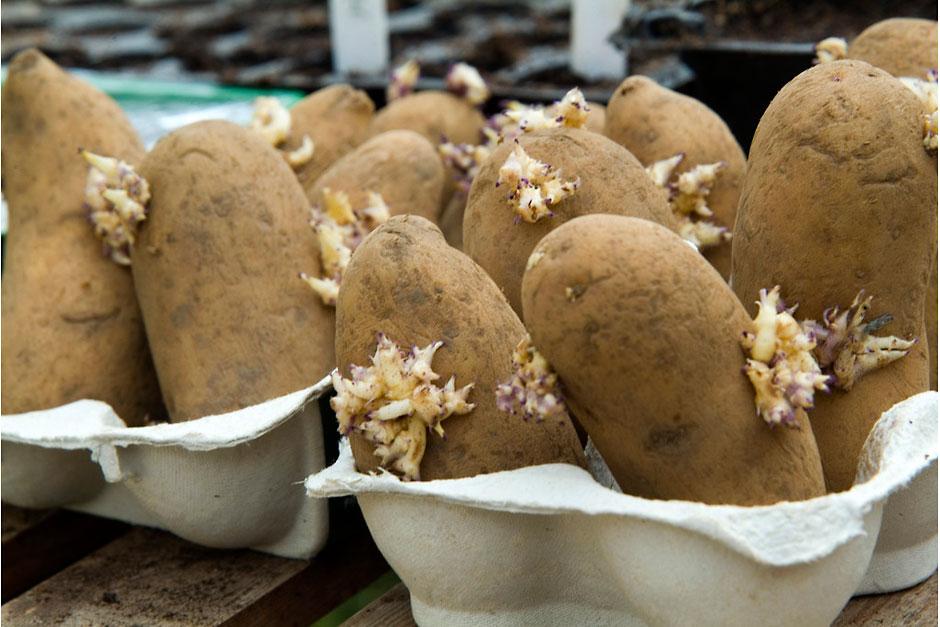Chitting Potatoes: Your Ultimate Guide to Pre-Sprouting Success!
Hello there, green-thumbed parents! Are you gearing up for a phenomenal potato harvest this year? Well, you’re in for a treat as we dive into the wonderful world of ‘chitting potatoes’. Whether you’re a seasoned gardener or a beginner looking for tips to get your kids engaged with growing veggies, pre-sprouting your potatoes is an exciting family activity that promises a basketful of benefits!
What is Chitting?
Chitting is simply the process of pre-sprouting potatoes before planting them in the ground. This head start can lead to earlier and sometimes larger harvests, giving your potato plants an edge they wouldn’t have otherwise. It’s a great garden project that can involve the entire family and offers a splendid learning opportunity for your little ones about the life cycle of plants.

Why Chit Your Potatoes?
Aside from the joy of watching your potatoes sprout ‘eyes’ and stems, chitting has practical benefits:
- Earlier Harvest: Get a jumpstart on the growing season and enjoy your homegrown potatoes sooner.
- Better Growth: Chitted potatoes often lead to stronger plants that are less susceptible to disease.
- Increased Yield: Improve the productivity of your plot with robust sprouts ready to grow vigorously once planted.
- Educational: Teach your children about plant biology in a hands-on way that will captivate their imagination.
Choosing the Right Potatoes to Chit
Not all potatoes are created equal when it comes to chitting. Here are some tips for picking the perfect spuds:
- Seed Potatoes: Always use certified seed potatoes to avoid diseases that can affect your crop. They’re specially prepared for planting and yield the best results.
- Variety Matters: Early and second early varieties of potatoes benefit the most from chitting as it gives them a significant advantage in growth.
- Eye Check: Look for potatoes with multiple ‘eyes’ or buds where sprouts will grow. A greater number of eyes can mean more shoots and a more bountiful harvest.
Gearing Up for Chitting
Preparation is key to successful chitting. You’ll need a few simple supplies to start:
- A bright, frost-free space, like a windowsill or a cool, light pantry.
- Egg cartons or shallow boxes to hold the potatoes with the ‘rose end’, where most of the eyes are, facing up.
- Potatoes to chit – pick up seed potatoes from your local garden center or online.

Chitting Potatoes: A Parent’s Guide to a Thriving Garden
Hey terrific parents! If you’re eager to turn gardening into a fun and educational family affair, starting with chitting potatoes is a fantastic choice! Creating an inviting green space and harvesting your very own potatoes is sure to be an adventure that everyone in the family will cherish. So, let’s get into the nitty-gritty of chitting and ensure you’re well-equipped for the journey ahead!
Five Things Parents Should Know Before Chitting Potatoes
Before we jump into chitting, there are some key things to consider that will set you up for success:
1. Timing is Everything
When it comes to chitting, timing can make a big difference. Aim to start chitting about six weeks before the last expected frost date. This way, your sprouts will be ready for planting out when conditions are prime.
2. Patience is a Virtue
Chitting is not an overnight process, sometimes taking a few weeks for sprouts to appear. Encourage your children to be patient observers, noting the changes as they occur gradually. It’s a great lesson in patience and observation skills!
3. Location, Location, Location
Selecting a proper chitting location is crucial. A sunny windowsill is often recommended, but what you’re truly looking for is a spot with plenty of natural light and cool temperatures, avoiding direct sunlight that may heat your potatoes too much.
4. Eyes on the Prize
When you’re selecting potatoes to chit, get the kids involved in choosing potatoes with good ‘eyes.’ These ‘eyes’ are potential sprouts, so finding spuds with several of these ensures a higher chance of success. Plus, it can turn into a fun ‘I spy’ game for the little ones!
5. Health and Safety First
Since chitting involves dealing with food, it’s important to teach children about cleanliness and hygiene during the process. Show them how to carefully handle the potatoes to avoid bruising, and remind them to wash their hands before and after handling their future plants.
Armed with these five pointers, you’re well on your way to chitting potatoes like a pro! Stay tuned for in-depth instructions on the next steps of the sprouting process, including expert advice on how to plant, nurture and harvest your potatoes. There’s nothing more rewarding than growing your vegetables with love and care. Together, let’s cultivate a bountiful garden and lifelong memories with our favorite ‘spud-tacular’ activity!
See more great Things to Do with Kids in New Zealand here. For more information see here
Disclaimer
The articles available via our website provide general information only and we strongly urge readers to exercise caution and conduct their own thorough research and fact-checking. The information presented should not be taken as absolute truth, and, to the maximum extent permitted by law, we will not be held liable for any inaccuracies or errors in the content. It is essential for individuals to independently verify and validate the information before making any decisions or taking any actions based on the articles.




